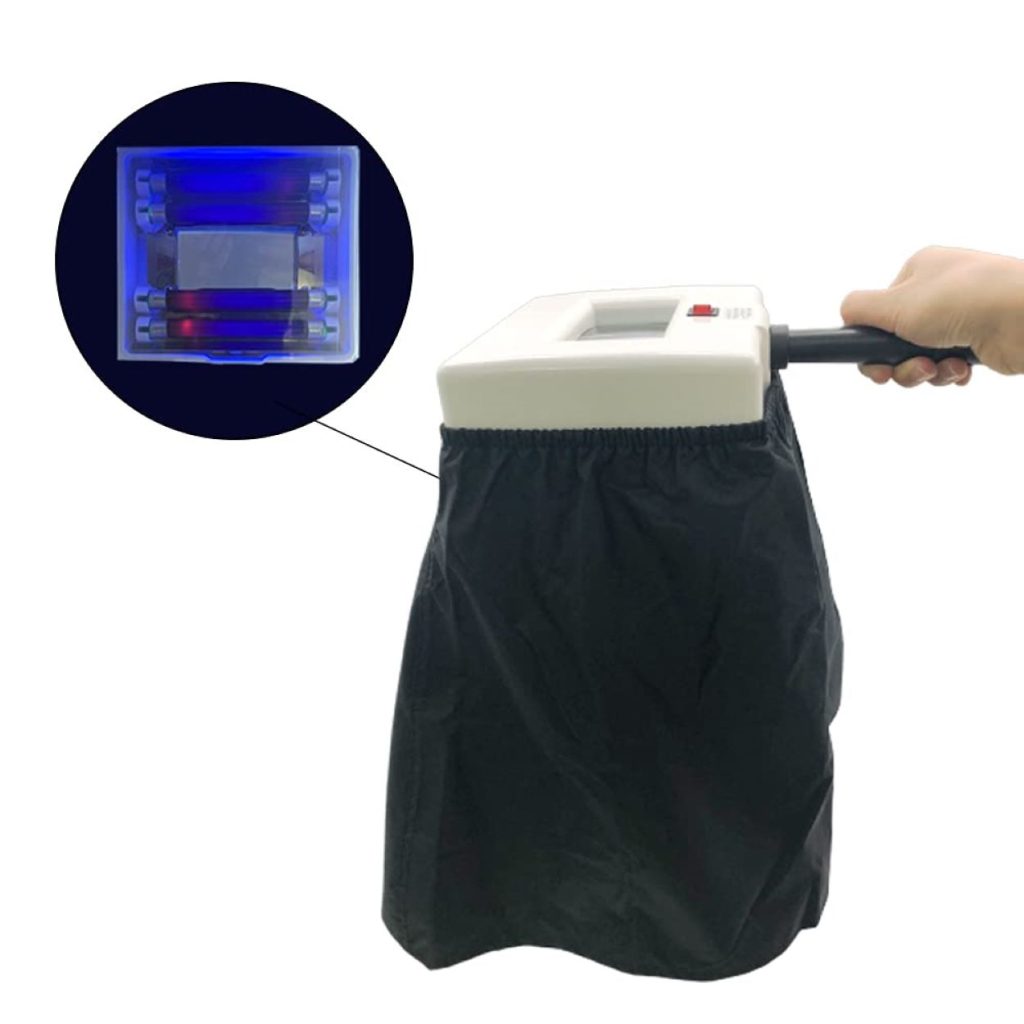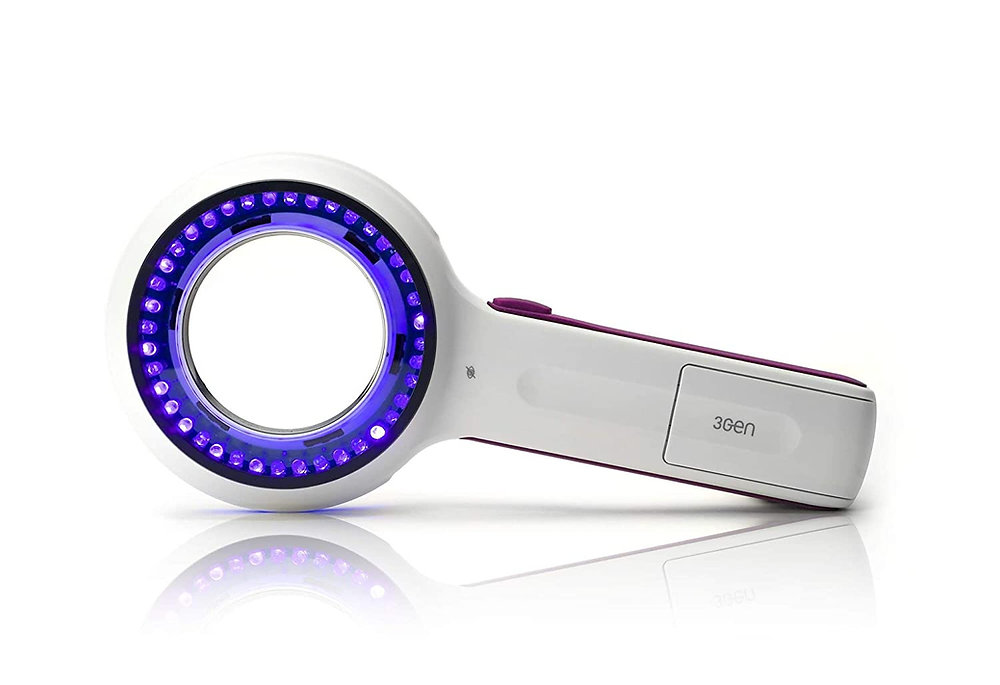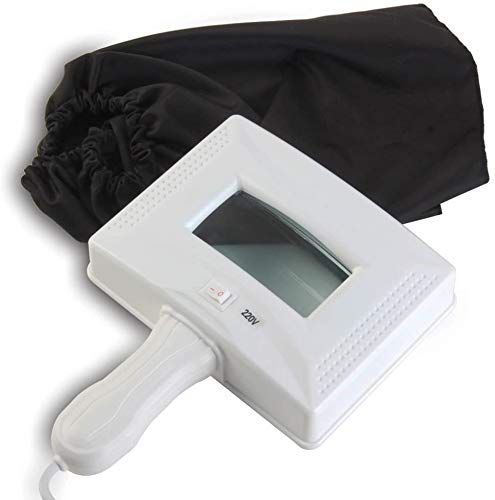What is a wood’s lamp? A Wood’s lamp, also known as a Wood’s light or ultraviolet (UV) light, is a specialized device used in dermatology and other medical fields for the diagnosis and evaluation of various skin conditions. This type of lamp emits ultraviolet light that can reveal certain skin abnormalities and conditions that may not be visible to the naked eye under normal lighting conditions. In this detailed guide, we will explore the history, function, uses, benefits, and safety considerations of a Wood’s lamp, shedding light on its significance in dermatological examinations and skin care practices.

1. History of the Wood’s Lamp:
The Wood’s lamp was invented by Robert W. Wood, a renowned American physicist, in the early 20th century. In 1903, Wood discovered that certain materials fluoresced under ultraviolet light, leading to the development of the Wood’s lamp as a diagnostic tool for skin disorders. Originally used in forensics and mineralogy, the Wood’s lamp found its way into dermatology and became an indispensable instrument for examining and diagnosing skin conditions based on their fluorescence properties.
2. Function and Technology:
A Wood’s lamp operates by emitting ultraviolet light in the UV-A spectrum, specifically at wavelengths between 320 to 400 nanometers. When the UV light interacts with certain substances present in the skin, hair, or bodily fluids, it causes them to fluoresce or emit visible light of different colors. This fluorescence phenomenon helps dermatologists identify specific pigments, proteins, or microorganisms associated with various skin conditions.
3. Uses of the Wood’s Lamp:
The Wood’s lamp is utilized in dermatology clinics, hospitals, and aesthetic centers for a wide range of purposes, including:
3.1 Skin Examination:
- Dermatologists use the Wood’s lamp to examine the skin for abnormalities, pigmentation changes, infections, and dermatological conditions such as vitiligo, tinea versicolor, acne, and psoriasis. The fluorescence patterns observed under the lamp can provide valuable insights into the underlying skin issues.
3.2 Fungal Infections:
- One of the primary applications of the Wood’s lamp is the detection of fungal infections, such as ringworm (tinea corporis) and fungal infections of the scalp (tinea capitis). The characteristic fluorescence of certain fungi under the UV light helps in diagnosing and monitoring these conditions.
3.3 Bacterial Infections:
- Certain bacterial infections, such as pseudomonas infections and erythrasma, can exhibit distinct fluorescence patterns when exposed to the Wood’s lamp. This facilitates the identification and treatment of bacterial skin infections based on their unique fluorescence characteristics.

3.4 Pigment Disorders:
- The Wood’s lamp is valuable in assessing pigment disorders like melasma, hyperpigmentation, hypopigmentation, and other conditions affecting the skin’s coloration. By evaluating the fluorescence patterns of pigmented lesions, dermatologists can determine the nature and extent of these disorders.
3.5 Cosmetic Consultations:
- In aesthetic medicine, the Wood’s lamp is used during cosmetic consultations to analyze the skin’s texture, hydration levels, sebum production, and sun damage. The lamp helps professionals tailor personalized skincare treatments and recommend appropriate products based on the skin’s fluorescence response.
4. Benefits of Using a Wood’s Lamp:
The utilization of a Wood’s lamp in dermatological examinations offers several advantages for both healthcare providers and patients, including:

4.1 Enhanced Visualization:
- The fluorescence induced by the Wood lamp enhances the visibility of subtle skin changes, making it easier to detect and diagnose certain skin conditions that may not be apparent under regular lighting conditions.
4.2 Rapid Diagnosis:
- By quickly identifying fluorescence patterns indicative of specific skin disorders, dermatologists can expedite the diagnostic process, leading to timely interventions and treatment plans tailored to the patient’s needs.
4.3 Non-invasive Technique:
- The use of a Wood’s lamp is non-invasive and painless, requiring minimal contact with the skin. This makes it a safe and comfortable tool for skin examinations, especially in sensitive or pediatric populations.
4.4 Monitoring Treatment Progress:
- Dermatologists can use the Wood lamp to monitor the progress of treatment for various skin conditions, assessing changes in fluorescence patterns over time and adjusting therapeutic strategies accordingly.
4.5 Educational Tool:
- The Wood lamp serves as an educational tool for medical students, residents, and healthcare professionals, allowing them to observe and learn about the fluorescence characteristics of different skin disorders firsthand.
5. Safety Considerations and Precautions:
While the Wood’s is generally safe for use in dermatological examinations, certain precautions should be taken to ensure the well-being of both patients and healthcare providers:
5.1 Eye Protection:
- Direct exposure to UV light can be harmful to the eyes, leading to potential risks such as corneal damage and cataracts. It is essential for both the examiner and the patient to wear protective eyewear when using the Wood’s lamp.

5.2 Skin Protection:
- Prolonged exposure to UV light can cause skin damage and increase the risk of skin cancer. Healthcare providers should limit the duration of exposure during examinations and apply sunscreen or protective clothing to minimize UV radiation exposure.
5.3 Disinfection and Hygiene:
- To prevent cross-contamination and ensure hygiene standards, the Wood’s should be cleaned and disinfected between each use according to established protocols. Disposable covers or sheaths can also be used to maintain cleanliness.
5.4 Patient Privacy and Consent:
- Respecting patient privacy and obtaining informed consent before conducting a Wood’s lamp examination is crucial. Patients should be informed about the procedure, its purpose, and the implications of the findings obtained through fluorescence analysis.
6. Future Developments and Innovations:
As technology advances, there is ongoing research and development in the field of dermatological imaging and diagnostic tools. Future innovations may lead to the integration of digital imaging systems, artificial intelligence algorithms, and spectral analysis techniques to enhance the capabilities and accuracy of skin examinations using devices like the Wood’s lamp.

Conclusion:
In conclusion, the Wood’s is a valuable tool in dermatology for examining, diagnosing, and monitoring a wide range of skin conditions based on their fluorescence properties. By leveraging the unique capabilities of ultraviolet light, healthcare providers can gain deeper insights into the skin’s health, detect hidden abnormalities, and tailor treatment plans to meet the individual needs of patients. While the Wood’s lamp offers numerous benefits in dermatological practice. It is essential to prioritize safety, hygiene, and patient-centered care when incorporating this diagnostic tool into clinical settings. As research continues to advance in the field of dermatology. The evolution of technologies like the Wood’s promises further improvements in skin assessment, disease management, and personalized skincare solutions.